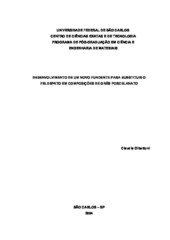Desenvolvimento de um novo fundente para substituir o feldspato em composições de grês porcelanato
Abstract
Amongst the various types of ceramic tiles, the porcelainized stoneware tile stands out due to its technical properties (low water absorption, high mechanical strength and high abrasion, chemical attack and frost resistance). In
this work, five compositions prepared by mixing ball clay, kaolin, feldspar, quartz and talc (a typical porcelainized stoneware tile composition, as found in the literature, and three new compositions) were studied, to observe the effect on the phase formation and final characteristics, of partial and total replacement
of the feldspar by a lab-made vitreous phase former (flux agent). Samples were characterized in terms of physical properties (firing shrinkage, water absorption and flexural strength). The results obtained show that a typical porcelainized stoneware product can be made by replacing the feldspar by the alternative flux agent: partial replacement led to rather satisfying results in terms of apparent
porosity, water absorption and mechanical strength; total replacement led to low apparent porosity and water absorption, and high flexural strength. These are very promising results, as they mean a 50 ºC reduction in the firing temperature (relative to the average 1200 ºC, commonly used in industrial practice), which
translates into reduced energy consumption. Furthermore, a costly raw material the feldspar could be replaced by a lab-made inert vitreous phase former, with no sacrifice to the processing or the physical and aesthetical
properties of the final product.
